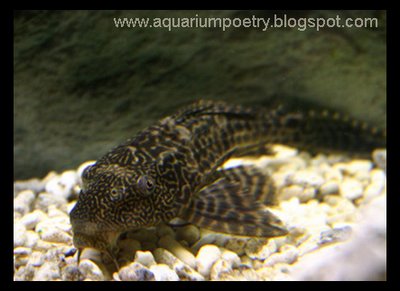Whiptail catfish
 Farlowella acus, Twig catfish.
Farlowella acus, Twig catfish.Algae is the preferred diet and therefore a well established tank is required and/or algae wafers should be supplied. Twig catfish can be kept in most freshwater community tanks without problems. This is a very peaceful species and must be kept with other peaceful fish. Small characins or rasboras should be fine but avoid aggressive fish such as barbs or cichlids as this is quite a fragile fish. This catfish can be kept both singly or in groups. This catfish does not handle shock very well and so large water changes must be avoided, a solution to this is several small water changes throughout the week rather than one large sudden water change.
Their size is up to 16 cm, pH 6.5 and temperature around 25'C. This fish needs to have a drift wood as a resting and hiding place. Plants are essential.
Photo by Dusko Bojic



